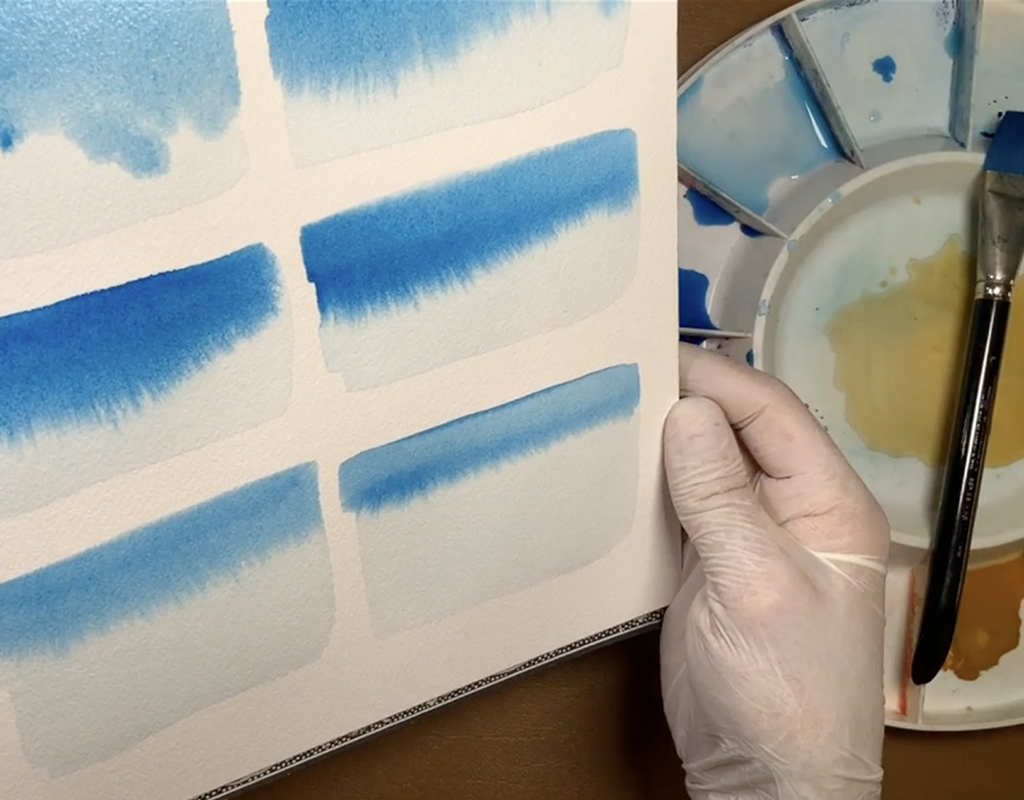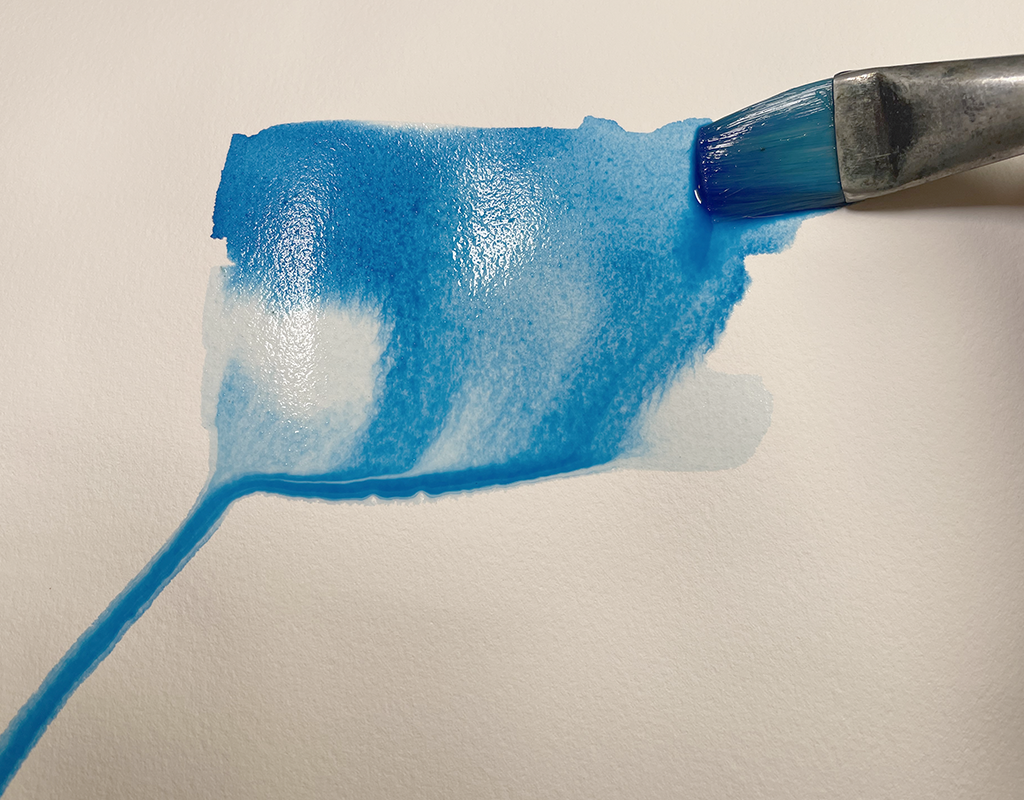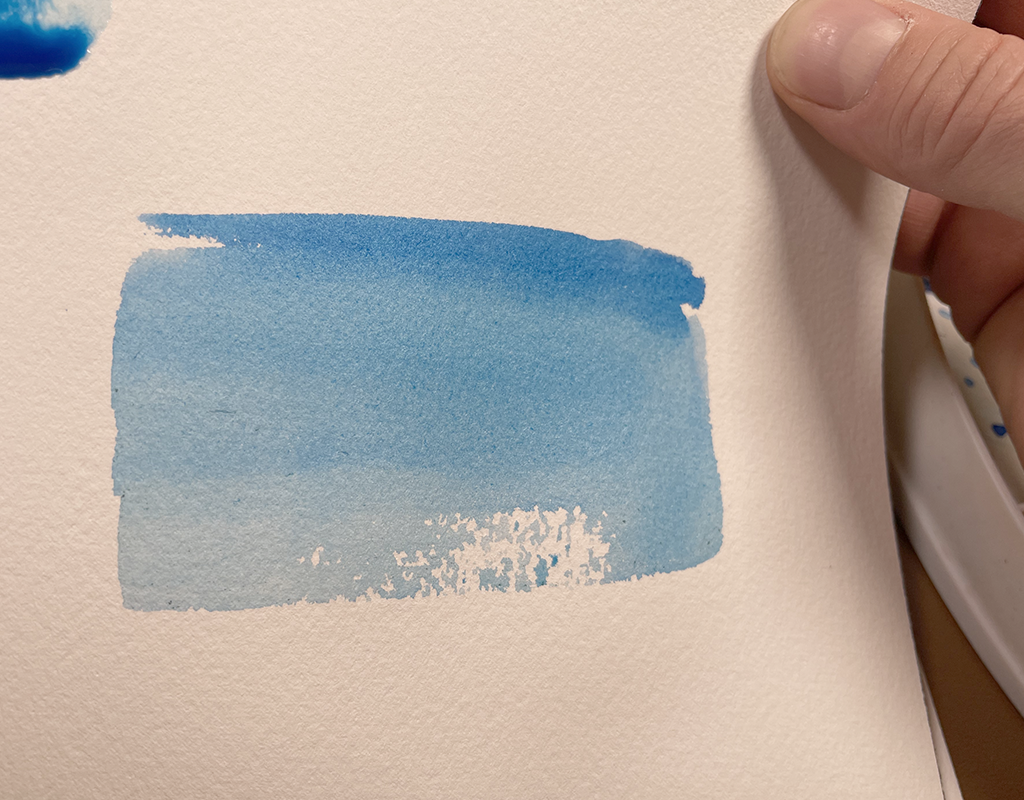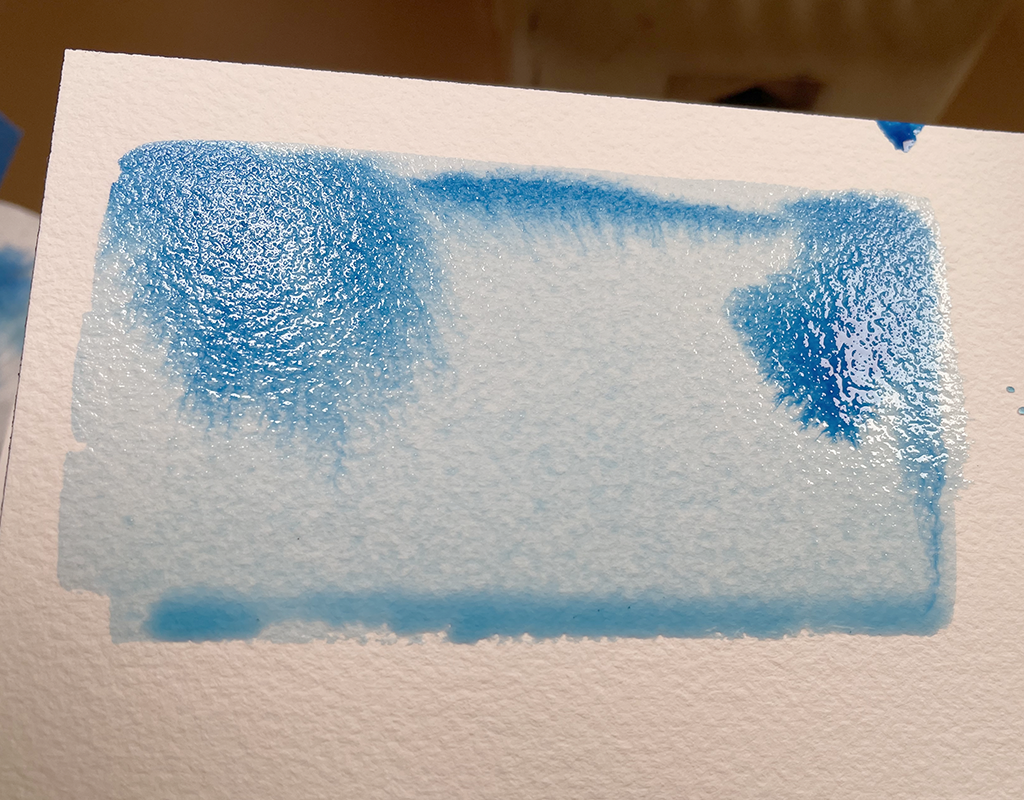
Dragged washes are a lot of fun.
It introduces a bit of controlled chaos to our painting. The trick here is water control, or more specifically, proportion.
We dont want it so thin with water that it wont run, and we dont want to so sopping wet that as soon as we tilt it, a stream of water runs over the paper. Of course if that happens, take notice, how much water did you feel was on the paper, did you like how it looks when it did run over. be open to those surprises as we may use that later intentionally.
The following image is an example of too much water and not enough.
This is a lot, notice how if we tilt this it will bead up and make a small river down the paper:

This is a bit too little if we want to leverage dragged washes.
remember the trick is getting that balance of too much and too little. Our muscle memory will tell us when to add more or take out some water with a towel. Also because we are archiving all of our sessions, and writing notes, we will be able to learn faster whenn looking back at our “mistakes”

The following image shows what may be a good amount of water that is “loaded” on the paper for a dragged wash.
When we tilt and drag, the color wil easily flow in the hills and vally of the cold pressed textured paper. Even when pooling occurs on the paper, its not enough to run out of our small painting section. How much water to add, the different amounts of tilt alog with how long to tilt is one of my favorite parts of this discovery process. There is no “perfect amount”, it just depends on how much grad you want an when you want to stop.
A note on when to stop.
If you get to a point that you love where the dragged wash is looking, lay it flat and wait until it dries. To speed up the process, you can use a hair dryer to speed the drying

